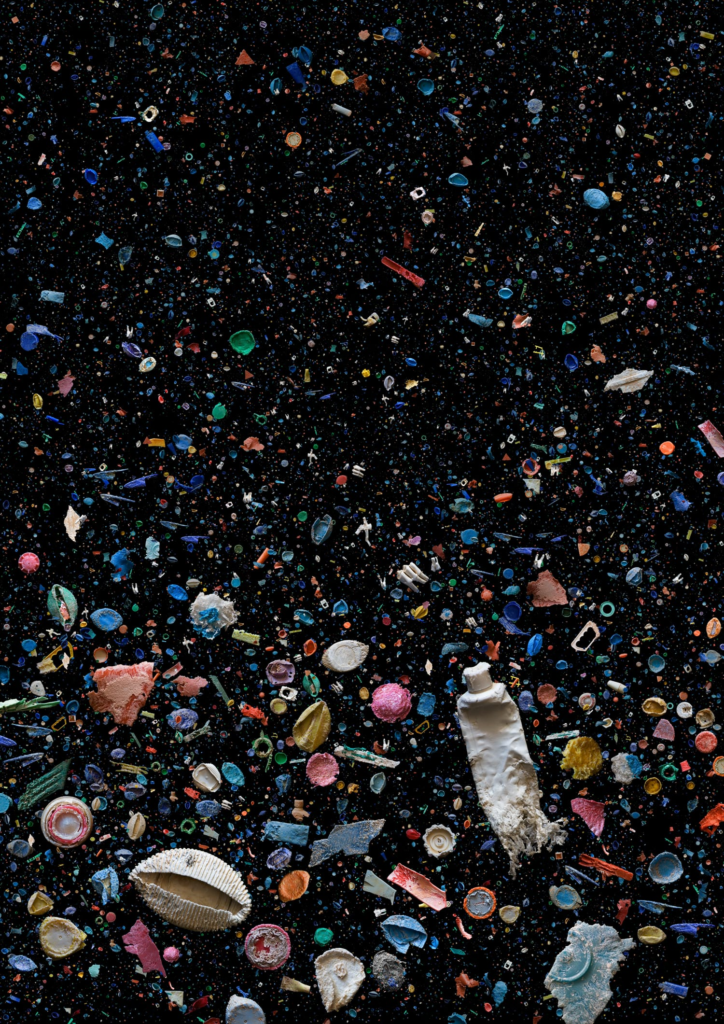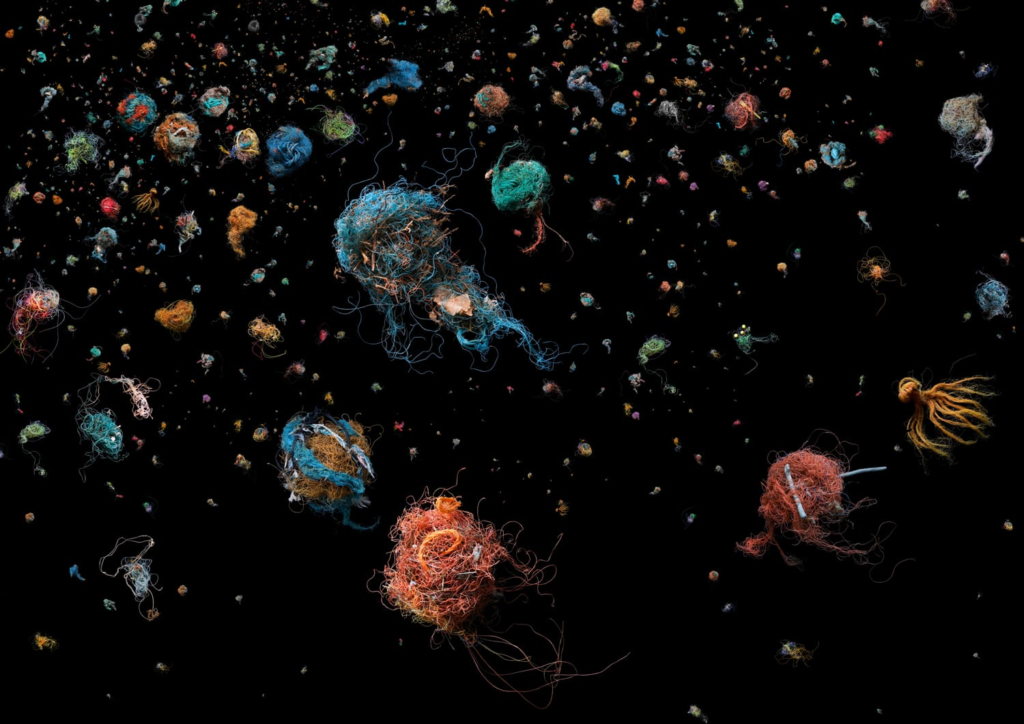Mandy Barker
Photographer Mandy Barker creates deceptively eye-catching images to document the pandemic of plastic debris in the world’s waterways. Barker, who is based in Leeds, UK, works closely with scientists to collect trash from our oceans and beaches on the edges of nearly every continent. One research expedition covered the debris field (stretching to Hawaii) that resulted from Japan’s 2011 tsunami and earthquake; she has also explored the Inner Hebrides in Scotland with Greenpeace. Barker manipulates her findings in Photoshop, mimicking the manner in which ocean water holds these objects in suspension. Swirls of colors and patterns draw in the viewer’s eye, only to realize that these visually appealing compositions consist of garbage that animals have attempted to chew, plastic pellets, tangles of fishing line, and water-logged soccer balls. The artist describes her work in a statement on her website: The aim of my work is to engage with and stimulate an emotional response in the viewer by combining a contradiction between initial aesthetic attraction along with the subsequent message of awareness. The research process is a vital part of my development as the images I make are based on scientific fact which is essential to the integrity of my work.
Examples Of Her Work


Evaluation Of Her Work

Barker uses lighting in an intense but careful way, she doesn’t really use lighting to shadow anything or portray anything, but rather uses it to create the black background to portray the deep sea. This image doesn’t have any tonal range within the background but rather just a clean clear back background, there is a colour difference within the fishing line, which she has used to turn these pieces of fishing line into something of jellyfish. This image is very textured, within you can see that the fishing line is almost dimensional, it is living and popping out of the screen. The image creates a lot of pattern, repetition of debris, repetition of jellyfish. Her compositions creates a lead for the eye, with the finer details of the ‘smaller’ jellyfish within the background as they descend further away. Jelly fish can handle a lot of harsh conditions and with the amount we pollute our seas and the amount that our oceans are being overfished it is creating an environment where they can and will thrive. Her imagery is a form of conceptualism, it creates a concept and a meaning, taking what is killing the marine life and making it look like the marine life, which iterates that our marine life cannot be replicated no matter how hard we try, and once our pollution of the ocean kills it all off we have to face that consequence.
